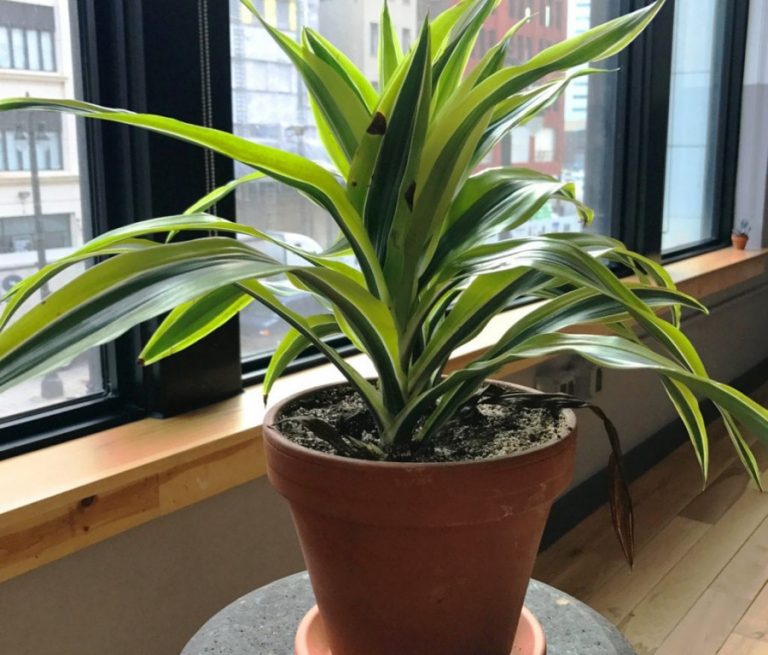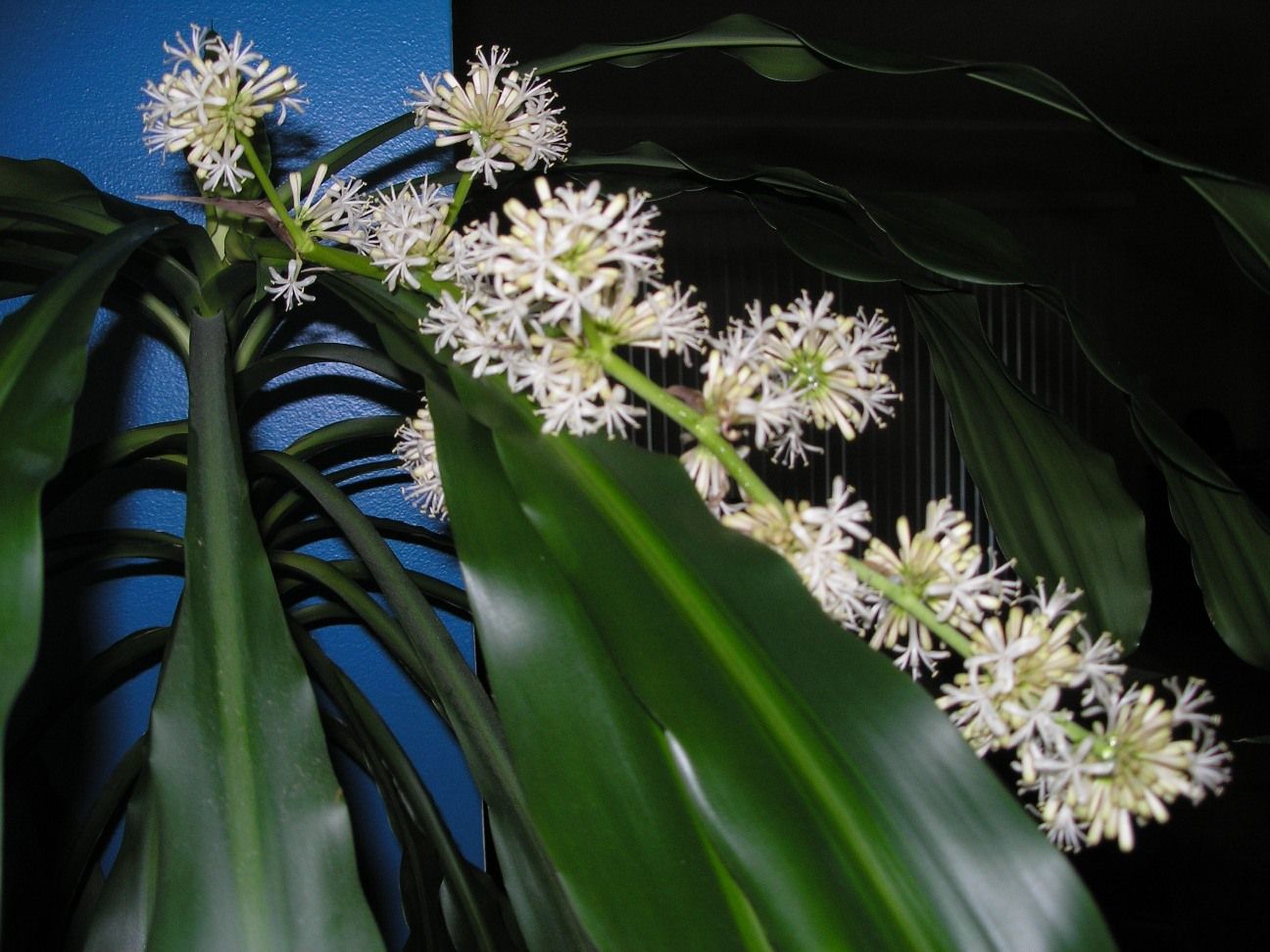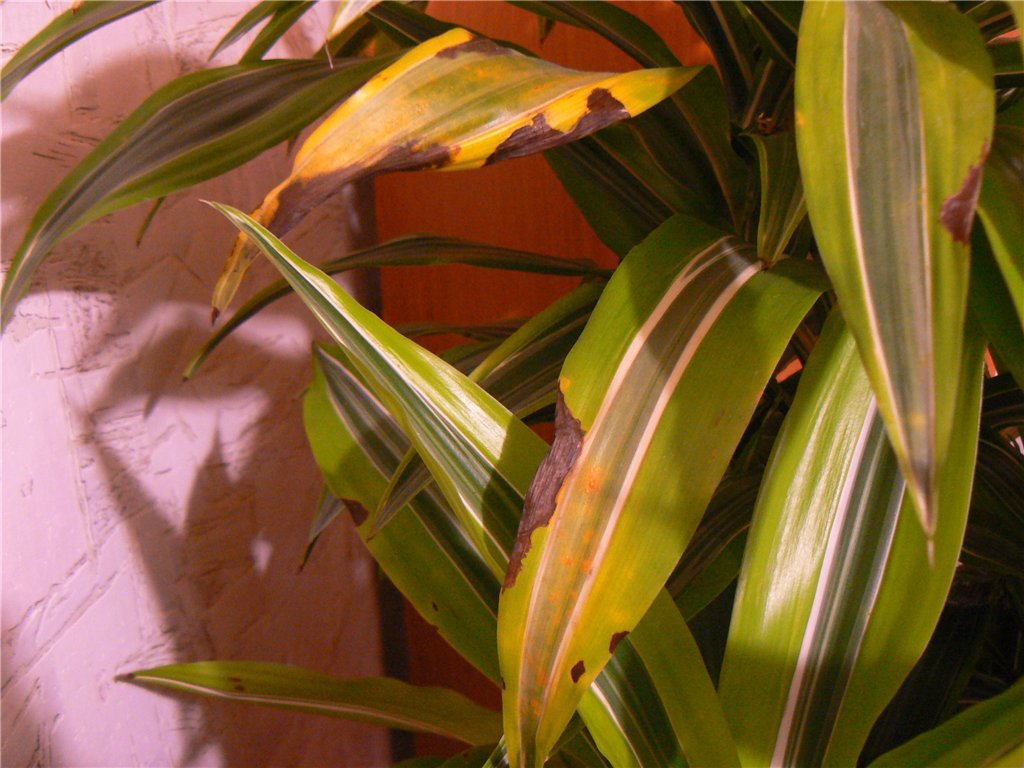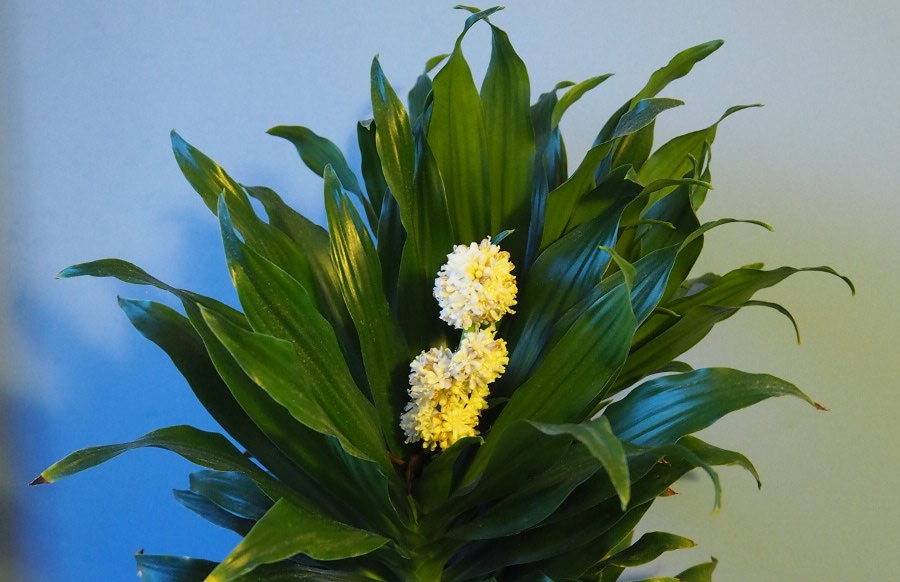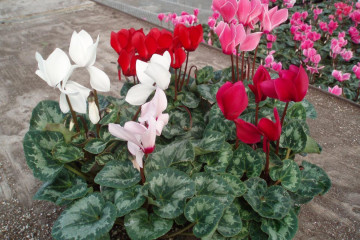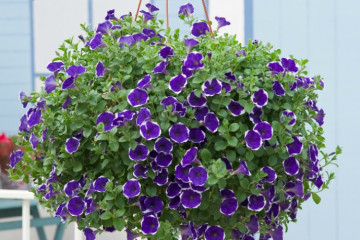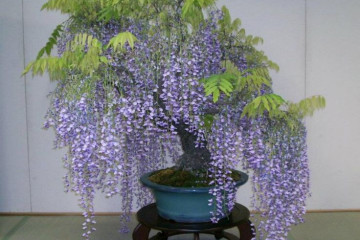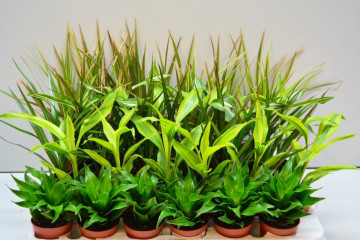Dracaena deremskaya - growing and care
Content:
Dracaena deremskaya is able to effectively fit into any interior. It is often used in the design of office and hotel premises, and unpretentious care makes this flower very popular in home floriculture.
What does the deremskaya dracaena look like, which family does it belong to
Dracaena deremenskaya (Dracaena deremensis) is a perennial evergreen plant that belongs to the Agave family. This shrub has a trunk without side branches, on which leaves are densely located. The plant resembles a bunch of foliage growing on the ground. However, as it grows, its trunk can stretch out, and the crown becomes like a palm tree. The leaves are xiphoid, light green and light-colored longitudinal veins.
Common varieties
Among the varieties of dracaena, artificially bred hybrids are especially popular. They are highly resistant to disease and frost. These varieties include: Janet Craig, White Stripe (White Stripe), Varneski and Lemon Lime.
Healing properties
Dracaena deremensis has the following healing properties:
- improves health and relieves headaches, purifies the air in the room;
- relieves stress and nervous conditions;
- boosts immunity.
Briefly about the history of appearance
The shrub grows in its natural environment in Africa and East Asia, where it has long been cultivated as a garden plant. In the middle and northern latitudes, dracaena is grown in houses and apartments.
Features of caring for dracaena derem house
Dracaena deremskaya care at home is simple, which makes the flower in demand in home floriculture.
Temperature
Caring for dracaena correctly means maintaining a constant temperature. In summer, it should be in the range from 21-24 ℃ above zero, with the arrival of autumn it is gradually reduced to 16-19 ℃.
Lighting
Lighting should be diffused, so it is better to place the pot in partial shade or on the western and eastern windows of the premises.
Watering
Watering the plant is recommended at a frequency of 2 times a week. If excess moisture accumulates in the pan, it must be drained. Water for irrigation should be at room temperature and not contain harmful impurities.
Spraying
The shrub requires daily spraying, once a week it is put under the shower to clear all hard-to-reach places of dirt.
Humidity
Dry air provokes drying of dracaena foliage, therefore, the humidity in the room should be at least 40% all year round.
Priming
The growing soil must be constantly loose and moist. It is worth maintaining the pH level in the range of 5.5-6.
Top dressing
You need to take care of the bush regularly, feed it. It is advisable to fertilize once every 2 weeks. For this, ordinary superphosphate or nitrate is used. It is also possible to use special complex mineral preparations: Fasco, Agricola or Stimul.
Features of care in winter, dormant period
During the rest period, almost all care measures are reduced. Watering is carried out only when absolutely necessary, and feeding is stopped altogether. Occasionally you need to spray the plant, since in winter, due to heating, the air in the room becomes dry.
When and how it blooms
In indoor conditions, it blooms no more than once every 8-11 years.
Types of flowers
The flowers are small - from 1 to 3 centimeters in diameter. The petals are white. During flowering, an unpleasant odor emanates from the buds.
Flower shapes
Small buds are located on the inflorescences in the form of a brush. A long peduncle has 10 to 20 flowers.
Flowering period
The plant practically does not bloom, which is why the period of blooming of its buds can fall for any period of time during the growing season.
Pruning
Trimming is only required when the trunk of the bush becomes noticeably elongated. In this case, parts of the plant are removed at the level of formation of cuttings.
How dracaena deremskaya reproduces
Dracaena can be propagated in various ways.
Germinating seeds
A complex breeding method that is practically not used at home. Soak the seeds in saline and plant them 1 centimeter deep in a nutrient medium. To create greenhouse conditions, the box is covered with foil.
Rooting cuttings
To propagate the dracaena, the cutting is cut from the stem. The length of the trim should be between 7 and 11 centimeters. You can place it vertically in the substrate or lay it horizontally, slightly burying it at one end into the ground. After that, the soil is moistened and covered with a film.
Air layering
The extreme stems are tilted to the ground and buried in the ground, leaving the top above the ground. For stability, secure with a bracket and watered thoroughly. After a month, the layers will take root and can be cut off from the main bush.
Transfer
It is recommended to transplant the dracaena every 3 years, and every year it is imperative to change the top layer of earth in the pot. This should be done in the spring in a larger pot and nutritious substrate. For good drainage, a layer of expanded clay or small brick chips is covered at the bottom of the container, and the substrate is mixed together with river sand.
Possible growing problems and diseases
Dracaena deremskaya is a species that is not highly resistant to diseases, moreover, it is often affected by insect pests.
Drops buds and leaves
Leaves droop and begin to fall off due to lack of moisture and nutrients in the soil. It is worth regularly feeding and watering the plant.
Leaves turn pale
The bush begins to fade when it lacks fertilizers and sunlight. The lack of iron is especially affected, which is solved by spraying the bush with a solution of ferrous sulfate.
The tips of the leaves dry
The edges of the leaf plates will dry out due to prolonged exposure to the bright sun. On hot sunny days, it is worth removing the pot with dracaena from the window deep into the room.
The lower leaves fall
This is how the plant behaves after hypothermia or watering with cold water. Do not allow a sharp drop in temperature, since the plant is thermophilic.
Pests
The following pests cause particular problems to the bush:
- scale insect - the leaves begin to turn black and wither;
- thrips - white dots appear on the front side of the leaves, and the insects themselves are located on the back in the form of black dots;
- spider mite - braids the plates and stems with a thin cobweb, sucks the juices out of them.
Other problems
If dry spots appear on the leaves, then the plant has received a sunburn. Do not water it during the daytime in sunny weather, and leave it in direct sunlight.
Signs and superstitions
Dracaena is a symbol of love and well-being in the family. It is believed that it helps to achieve the set goals, as it will raise morale and mood. If a rarely flowering bush has flowers, then soon the owner will be financially lucky.
Dracaena deremskaya has a spectacular, elegant appearance, which makes it in demand in indoor floriculture. With proper care, it can bloom, which will bring material prosperity to the house (according to the sign).
